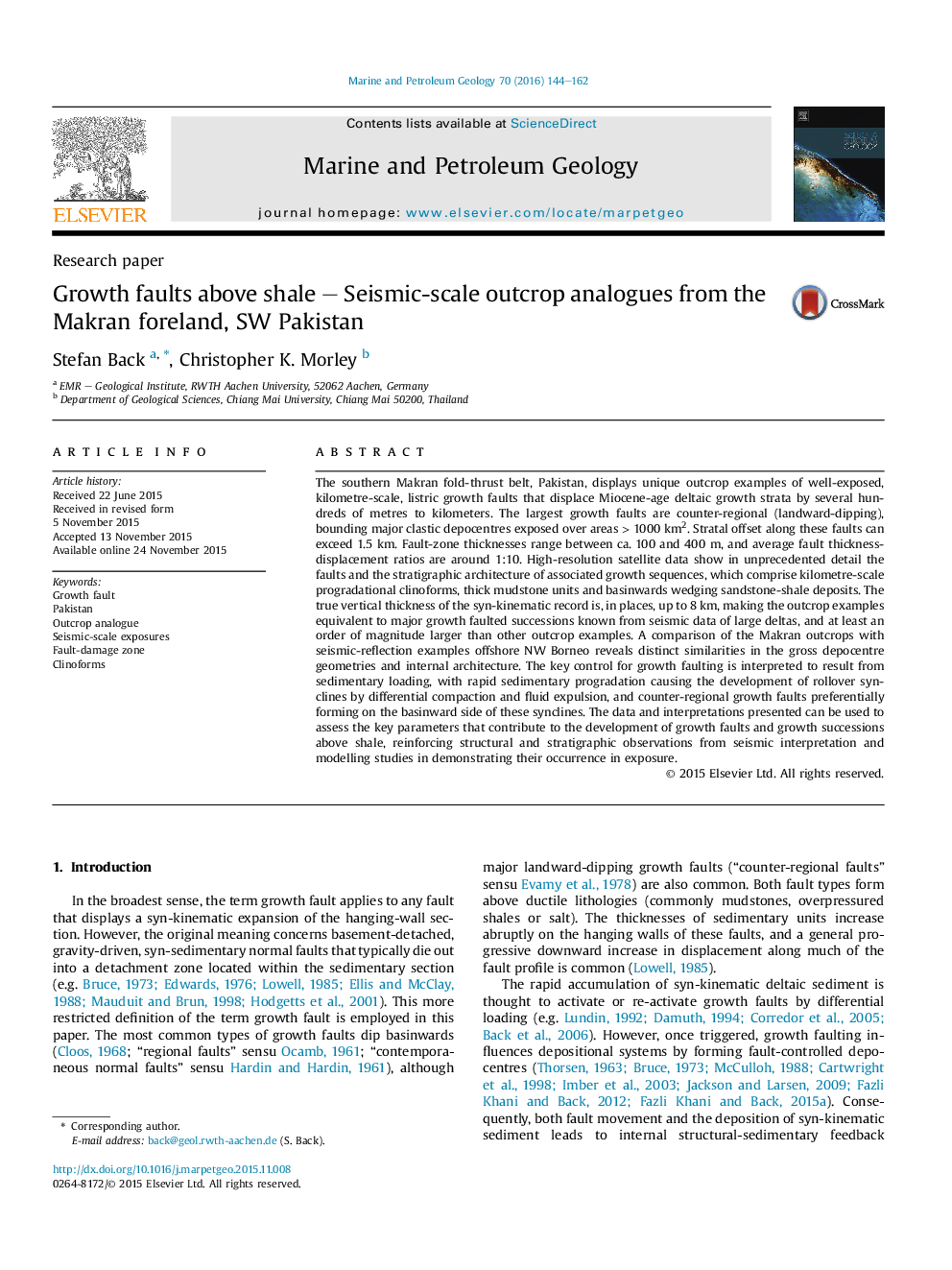| Article ID | Journal | Published Year | Pages | File Type |
|---|---|---|---|---|
| 4695449 | Marine and Petroleum Geology | 2016 | 19 Pages |
•The southern foreland of the Makran fold-thrust belt, SW Pakistan, exposes kilometre-scale extensional growth faults.•Satellite data show in unprecedented detail the structural and stratigraphic style of growth faults and growth sequences.•The Makran growth faults can be considered as field analogues for buried systems imaged in lower-resolution seismic data.•Sedimentation likely controlled the initiation of growth faulting by differential loading, compaction and fluid expulsion.
The southern Makran fold-thrust belt, Pakistan, displays unique outcrop examples of well-exposed, kilometre-scale, listric growth faults that displace Miocene-age deltaic growth strata by several hundreds of metres to kilometers. The largest growth faults are counter-regional (landward-dipping), bounding major clastic depocentres exposed over areas > 1000 km2. Stratal offset along these faults can exceed 1.5 km. Fault-zone thicknesses range between ca. 100 and 400 m, and average fault thickness-displacement ratios are around 1:10. High-resolution satellite data show in unprecedented detail the faults and the stratigraphic architecture of associated growth sequences, which comprise kilometre-scale progradational clinoforms, thick mudstone units and basinwards wedging sandstone-shale deposits. The true vertical thickness of the syn-kinematic record is, in places, up to 8 km, making the outcrop examples equivalent to major growth faulted successions known from seismic data of large deltas, and at least an order of magnitude larger than other outcrop examples. A comparison of the Makran outcrops with seismic-reflection examples offshore NW Borneo reveals distinct similarities in the gross depocentre geometries and internal architecture. The key control for growth faulting is interpreted to result from sedimentary loading, with rapid sedimentary progradation causing the development of rollover synclines by differential compaction and fluid expulsion, and counter-regional growth faults preferentially forming on the basinward side of these synclines. The data and interpretations presented can be used to assess the key parameters that contribute to the development of growth faults and growth successions above shale, reinforcing structural and stratigraphic observations from seismic interpretation and modelling studies in demonstrating their occurrence in exposure.
